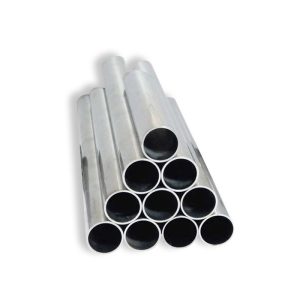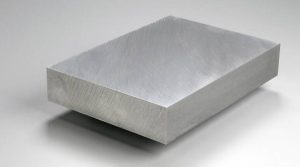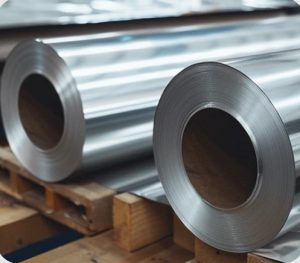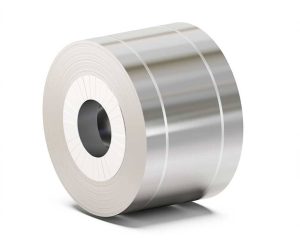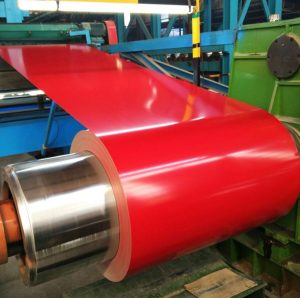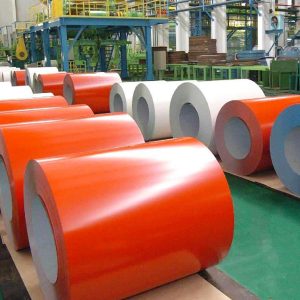PPGL, or Pre-painted Galvalume steel, featuring an alu-zinc coated substrate, is highly valued for its excellent durability and superior corrosion resistance. This makes it a preferred material for demanding applications such as roofing, wall cladding, and manufacturing various appliances. Despite its robust qualities, different types of “spots” can occasionally appear on these coils, potentially affecting their aesthetic quality or, in some cases, their long-term performance.
Understanding Common PPGL Coil Spots
Spots observed on PPGL coils can present in various forms, each indicative of different underlying causes and implications:
- White Rust: These are characterized by white, powdery, or chalky deposits on the coil surface. White rust typically forms when tightly wound coils are exposed to moisture, condensation, or high humidity, leading to the oxidation of the zinc and aluminum components in the Galvalume coating. While often superficial, if extensive or left unaddressed, white rust can eventually compromise paint adhesion and the substrate.
- Coating Blemishes: This broad category includes defects such as paint blisters (small bubbles), pinholes (tiny holes in the paint film), craters (small, round depressions), or noticeable color inconsistencies and mottling. Such spots usually originate from issues during the coating line process, for instance, inadequate surface preparation of the Galvalume base, errors in paint application, contaminants in the paint, or improper curing temperatures and times.
- Handling and Storage Marks: Physical damage like scratches, scuffs, pressure marks (from uneven coiling or stacking), or distinct water stains can develop due to improper handling techniques during transportation, slitting, or installation, or from suboptimal storage conditions. For example, prolonged contact with water or storing coils directly on damp surfaces can lead to moisture absorption and subsequent staining or corrosion initiation.
- Contamination Spots: These spots can be caused by residues of oil, grease, dirt, or other foreign substances that come into contact with the coil surface either before the painting process, during it (if not adequately cleaned), or after painting but before final curing or protective film application.
Causes and Prevention Strategies for Spots on PPGL
The emergence of spots on PPGL coils is frequently linked to lapses in process control, the quality of raw materials used, and prevailing environmental factors during manufacturing and storage. Key preventive measures are crucial:
- Substrate Quality and Preparation: Ensuring the base Galvalume steel substrate is of high quality, thoroughly cleaned, properly passivated or pre-treated, and entirely free from surface contaminants or defects before the paint application stage is fundamental.
- Paint System and Application Control: Utilizing high-performance, compatible paint systems and maintaining strict, consistent control over the entire coating process is essential. This includes monitoring paint viscosity, ensuring uniform film thickness, precise oven curing temperatures, and optimal line speeds. Leading manufacturers, such as Shanxi Luokaiwei Steel Company, often implement comprehensive quality assurance protocols at this critical stage.
- Moisture Control: Protecting coils from any form of moisture (rain, condensation, high ambient humidity) at all stages – from production through packaging, transit, and final storage – is paramount to preventing white rust and water stains. This involves using appropriate protective packaging, desiccants if necessary, and ensuring storage facilities are dry and well-ventilated.
- Careful Handling and Storage Practices: Implementing standardized, careful handling procedures using appropriate lifting and moving equipment can significantly minimize the risk of mechanical damage like scratches, dents, and pressure marks. Coils should be stored off the ground, ideally on pallets, in a clean, dry, and covered environment.
- Supplier Standards and Raw Material Sourcing: Partnering with reputable PPGL suppliers who adhere to internationally recognized quality control standards and source high-quality raw materials (both the Galvalume substrate and the paint systems) can significantly reduce the likelihood of receiving coils with spot defects. Companies like Shanxi Luokaiwei Steel Company typically prioritize consistent quality and traceability in their PPGL production chain.
Implications and Addressing Spots on PPGL Coils
The significance of any spots found on PPGL coils depends heavily on their type, size, density, and the specific requirements of the intended end-use application. Minor, isolated aesthetic blemishes might be deemed acceptable for certain functional uses where appearance is not critical. However, widespread corrosion, significant coating adhesion failure, or extensive blistering can render the material unsuitable for its purpose and may compromise the longevity of the final product. If spots are detected on PPGL coils, it is important to accurately identify their nature and potential cause. Consultation with the supplier, which could be a firm like Shanxi Luokaiwei Steel Company, is advisable to help determine the severity of the issue and discuss an appropriate course of action. This might range from simple surface cleaning for very minor, superficial spots to detailed inspection, testing, and potential claims for more significant or widespread defects. Understanding the inherent characteristics of PPGL, which is pre-painted steel with an advanced alu-zinc base, helps in correctly assessing the impact of such spots on its renowned long-term corrosion resistance. While PPGL generally offers superior protection against corrosion compared to traditional PPGI (Pre-painted Galvanized Iron), maintaining its integrity through proper manufacturing and handling, as practiced by quality-conscious firms, sometimes including those like Shanxi Luokaiwei Steel Company, remains vital. The rigorous quality control systems implemented by reliable producers, such as Shanxi Luokaiwei Steel Company, are key to minimizing spot-related issues from the outset and ensuring customer satisfaction with the coil’s performance.


